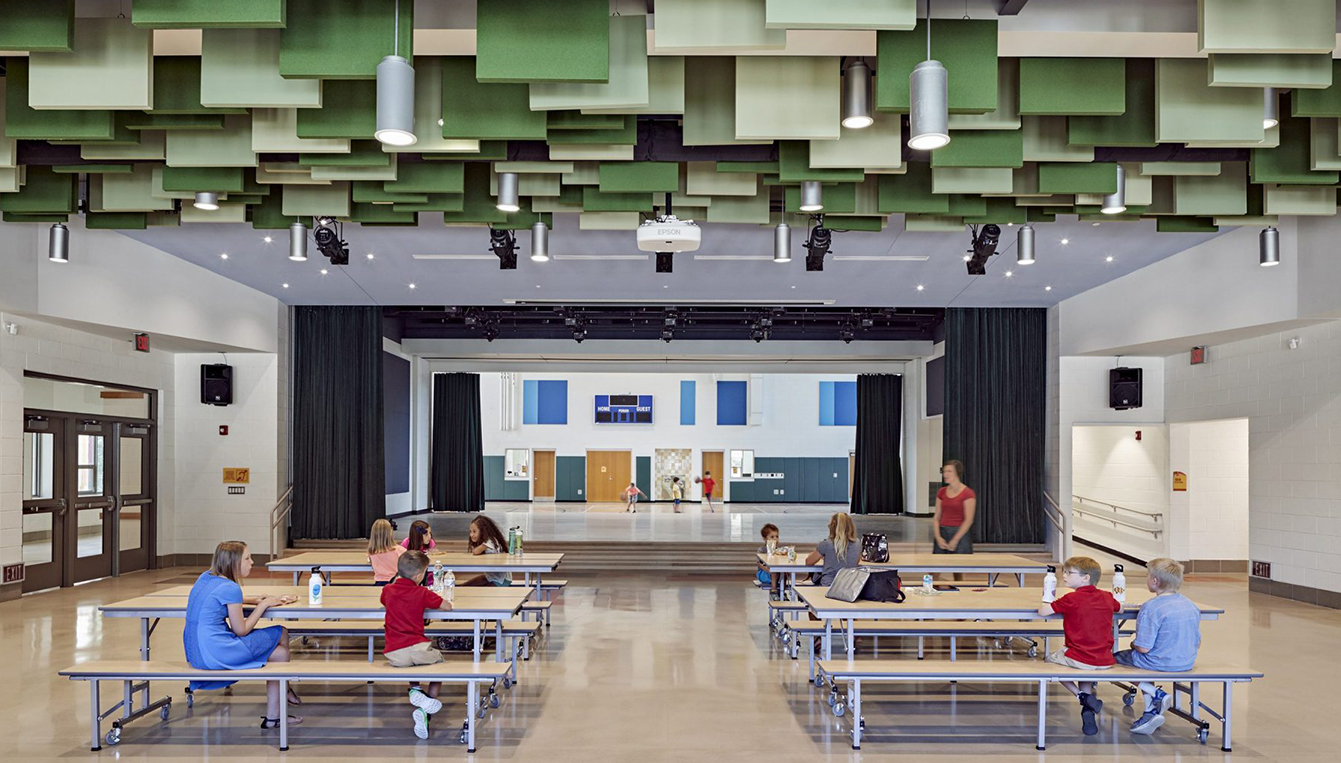Benjamin Markham
President

An Acentech colleague recently attended an event where the speaker uttered the following sentence (or something like it): “Acoustical ceiling tiles are good at sucking up sound, but they also suck up your soul.” After this acoustical consultant calmed down a little (count to ten, breathe…), I had a few reactions:
1. At least 80% of the time, the ceiling is the best place to put sound absorption in a room.
2. There are so many good alternatives to ACT! Lots of things can be useful sound absorbers – it doesn’t have to be a 2×2 grid.
3. Someone ought to write a throaty defense of good ole’ reliable ACT and post it on our blog.
This piece is going to delve into the first two of these reactions a bit further. (I’ll spare you the third, dear reader, but email me if you’re interested to discuss further.)
First, why the ceiling? Mostly, three reasons:
1. The ceiling is big. In many spaces, good acoustical conditions require a large area of sound-absorbing treatment. Walls are often occupied (shelves, whiteboards, AV screens, windows), leaving fairly little room for sound-absorbing products. And floors don’t lend themselves well to soft porous sound-absorbing materials (carpet, it turns out, is a relatively mediocre absorber), not to mention the fact that the floor is often covered with furniture. The ceiling, however, is often large, and more or less “available” for absorptive treatment.
2. The ceiling is evenly distributed. Especially for multipurpose spaces, offices, flexible classrooms, and other rooms without fixed speaker and listener locations, locating treatment evenly distributed throughout the room (and not clustered off to one side) is highly beneficial. It creates a more uniform acoustical experience if everyone in the room is equidistant to the absorptive material, as is the case of a room with a roughly flat ceiling treated with an absorptive finish. For many spaces, we do not want a “live” side and a “dead” side – we want the whole room to work, acoustically. (It is also worth noting that like most good “rules”, this one has many exceptions – performance and presentation spaces, for example.)
3. The ceiling is out of the way. Many acoustical materials are not terribly abuse-resistant; the ceiling takes them out of reach, effectively protecting them from harm.
There are, however, other reasons why the ceiling of your room may or may not be perfectly suited to receive an absorptive finish – sound reflection patterns and timing, the presence or absence of other ceiling design features (skylights, for example), and other considerations. But if a design team does come to the conclusion, as it so often does, that the ceiling is best, many alternatives exist for providing sound-absorbing treatment.
Some examples include perforated metal and perforated wood, as seen at the Schumann Library + Learning Commons and the Olin Business School respectively; stretched-fabric systems, like at the Jamaica Plain Branch of the BPL; suspended baffles, used at Sandy Hook Elementary School (as seen above); spray-applied treatment as seen at the Continuum Headquarters; so-called “acoustical plaster” finishes, as seen in the recently refurbished Massachusetts State House’s Senate Chamber, or a combination of different approaches, like in the Shapiro Family Courtyard of the MFA, which boasts two ceiling treatments suspended below its skylight roof: a stretched dual-layer translucent microperforated vinyl system along the sides, and a series of louvers made from perforated metal and insulation.
Even ACT doesn’t have to look like ACT – large-format panels, concealed-spline panels, brick patterning, and even triangles and curves and other non-rectilinear shapes are all possible with some acoustic ceiling panel products.
Here at Acentech we’re not going to let acoustical ceiling treatment “suck our soul” – rather, we embrace the opportunity and the design challenge that the ceiling offers as an oftentimes excellent location for sound-absorbing finishes.